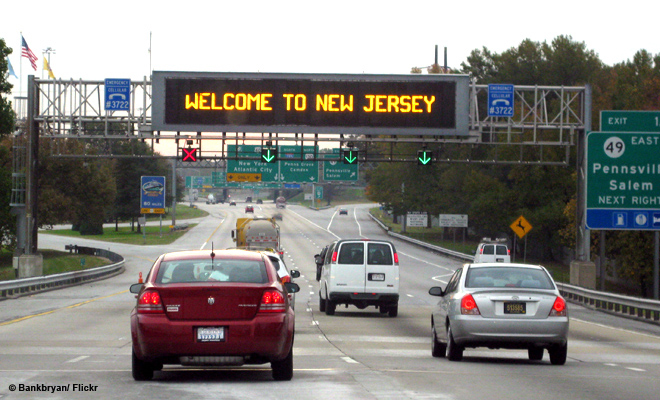New Jersey Future Blog
A Better Way To Plan for Traffic Effects of New Development
November 2nd, 2018 by Tanya Rohrbach

Woodmont Metro at Metuchen Station, built near transit and with shared parking, reducing the need for driving between destinations.
San Jose, California, is changing the way transportation planning is done. In a webinar hosted by Smart Growth America, a San Jose transportation planner discussed the problems with using transportation level of service (LOS) as a metric for mitigating impacts of traffic. Level of service measures the supply side of transportation – for example, the time it takes for a car to get through an intersection or the number of parking spaces per facility – but it doesn’t measure how efficiently a space is being used. A disconnect exists between land use and transportation in LOS analyses because there is no consideration given to other aspects of the space, such as a location’s vibrancy or access to mobility without the use of a personal vehicle.
That’s where vehicle-miles traveled (VMT) comes in. This metric prescribes to a more efficient use of space. It accounts for various land uses such as employment, residential or commercial, and can be calculated per resident, employee or other unit. The metric assesses how well people’s needs can be met without traveling by car. Low vehicle miles traveled earns a high VMT score, which can translate to better walkability, bikeability or vibrancy. If the use of a car is a necessity because destinations are too far away, too dispersed or hazardous to access, the VMT score is low. To use the tool, local officials, developers or the public can enter information about a project, then view different mitigation scenarios to assess the impact on VMT. The City of San Jose implemented the VMT tool in an effort to promote environmental sustainability; assess the effectiveness of mitigation actions taken by developers to reduce VMT; support transit, bicycle and pedestrian mobility; and simplify the project application review process. The tool can be downloaded from the City of San Jose website and is expected to be updated and revised over the next year as feedback is received.
Part of the reason that the City of San Jose was able to implement this policy is due to passage of a 2013 California Senate bill (SB 743), which encourages the use of smart-growth metrics by restricting jurisdictions from using LOS for transportation analyses under the California Environmental Quality Act. Even without a state law, a VMT model can be embraced by decision-makers who see the benefits to climate resilience, pollution, health and advancing local visions for public spaces that implementation of a more holistic approach to transportation analyses would bring.
The State Smart Transportation Initiative also participated in the webinar and discussed modernizing mitigation to accommodate a demand-centered approach – rather than supply-based solutions such as adding more lanes or additional parking – and discussed what was done in San Francisco and Pasadena to accommodate SB 743. Their report is available on their website, along with resources for promoting equitable and environmentally and economically sustainable transportation practices.















